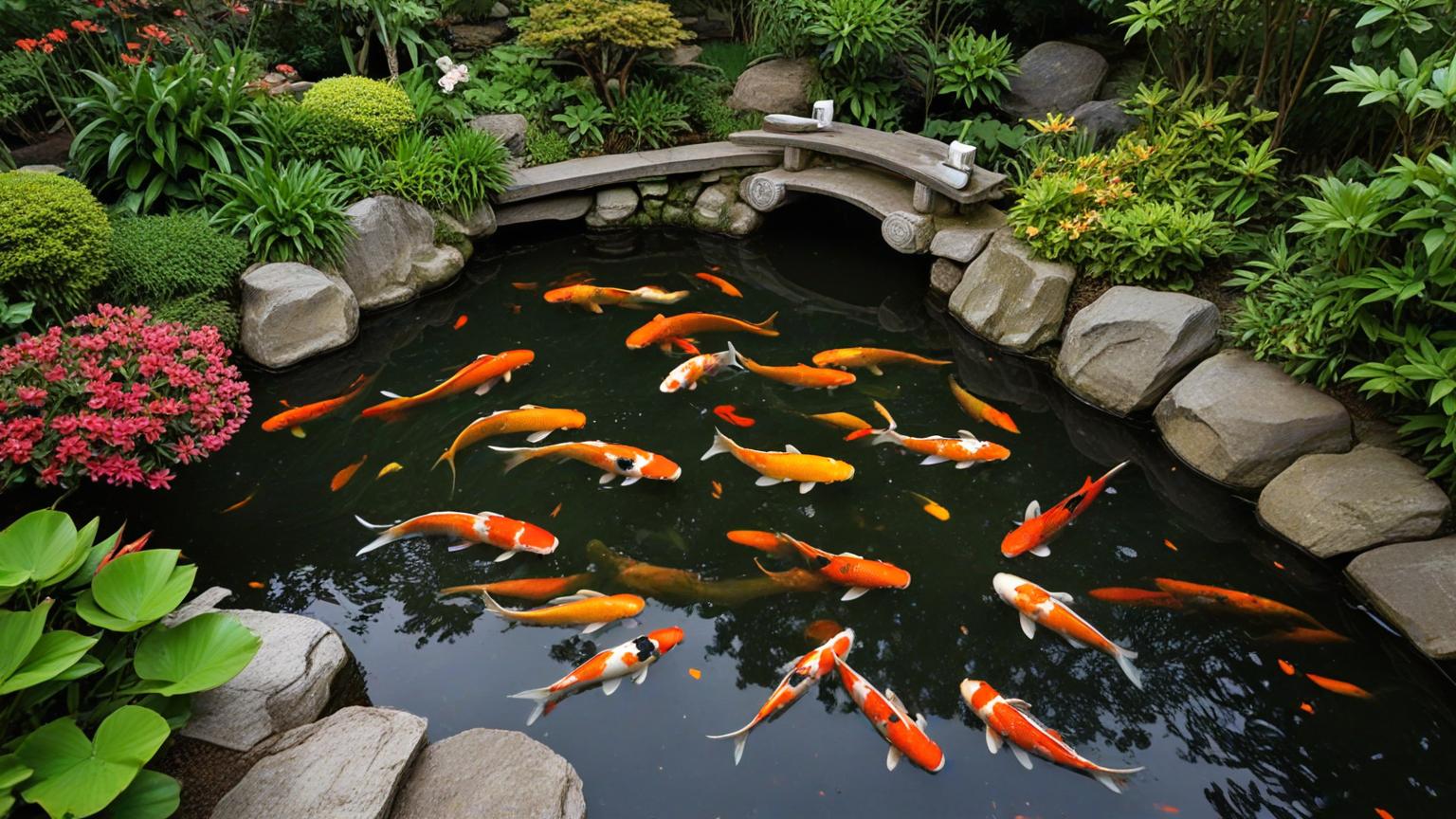Koi fish, known for their vibrant colors and graceful movements, have captivated hobbyists and aquarists for centuries. Originating from Japan, koi fish (or Nishikigoi, meaning “brocaded carp”) are descendants of common carp but have been selectively bred for their colors, patterns, and unique markings. Today, koi are appreciated worldwide not only for their beauty but also for their cultural significance and symbolic meanings, which include prosperity, perseverance, and harmony.
A Brief History of Koi Fish
The history of koi dates back over 2,000 years when carp were first domesticated in China for food. However, it was in Japan during the early 19th century that selective breeding transformed the fish into the vibrant koi we know today. Initially kept by rice farmers for their striking colors, koi gradually became symbols of beauty and good fortune, making their way into ponds across Japan and, eventually, the world.
Types and Colors of Koi
Koi come in a remarkable variety of colors and patterns, each with its own name and characteristics. Here are some popular types:
- Kohaku: White koi with red markings, one of the most iconic and highly prized varieties.
- Sanke: Similar to Kohaku but with additional black markings.
- Showa: Black koi with red and white patterns, creating a bold contrast.
- Asagi: Blue-gray koi with red along the belly and fins, featuring a net-like pattern on its scales.
- Bekko: Solid-colored koi with black spots, available in white, yellow, and red variations.
Each variety of koi has its unique appeal and can significantly impact the aesthetics of a pond.
Ideal Pond Environment for Koi
Koi are relatively hardy fish, but they thrive best in a well-maintained pond environment that replicates their natural habitat. Here are some essentials for keeping koi healthy and happy:
- Pond Size: Koi can grow up to 36 inches long, so they need a spacious pond of at least 1,000 gallons. A deeper pond (at least three feet) is also recommended to prevent temperature fluctuations and protect the koi from predators.
- Filtration and Water Quality: Koi produce a lot of waste, so an effective filtration system is essential to keep the water clean. Regularly testing the water for ammonia, nitrites, and pH levels ensures a safe environment for the koi.
- Temperature and Seasonality: Koi are cold-water fish but do best in temperatures between 59°F and 77°F (15°C-25°C). In colder regions, some keepers install heaters to maintain stable temperatures, especially during the winter months when koi become less active.
- Oxygenation: Good water movement and aeration, either through fountains or waterfalls, are vital for providing oxygen and promoting healthy fish.
Feeding Koi: Nutrition and Best Practices
Koi fish are omnivores and enjoy a variety of foods, from commercial koi pellets to vegetables and fruit. A balanced diet is essential for maintaining vibrant colors and strong immune systems. During warmer months, feed koi 2-4 times daily, while in cooler months, their metabolism slows, requiring less frequent feeding or fasting entirely in winter. Specialty foods containing spirulina, krill, and color-enhancing additives are often recommended to enhance their hues.
Koi Health and Common Issues
Like all fish, koi can be susceptible to diseases if their environment is not properly maintained. Some common health issues include parasites, bacterial infections, and fin rot. Regular water testing, ensuring proper filtration, and observing koi behavior are essential steps in preventing health problems. If a koi appears listless, has clamped fins, or shows visible signs of illness, prompt action such as water changes or treatment with appropriate medications may be necessary.
Cultural Significance of Koi
In Japanese culture, koi are symbols of luck, strength, and perseverance. The legend of the koi swimming upstream and transforming into a dragon upon reaching the top of a waterfall has made the fish an emblem of resilience and ambition. This cultural reverence has made koi popular for use in ponds, tattoos, and artwork worldwide, further solidifying their place in both Eastern and Western cultures.
The Joy of Keeping Koi
Caring for koi can be a highly rewarding experience, not only for the beauty they bring but also for the calming and meditative effect of watching them swim. Koi are intelligent and social animals, often responding to their keepers and even feeding from their hands once they’re familiar. For many enthusiasts, koi keeping becomes more than a hobby—it’s a way to connect with nature, cultivate patience, and appreciate the art of pond-keeping.
Whether you are a beginner or an experienced aquarist, koi offer endless fascination, beauty, and joy to those willing to invest the time in understanding their care and history.

